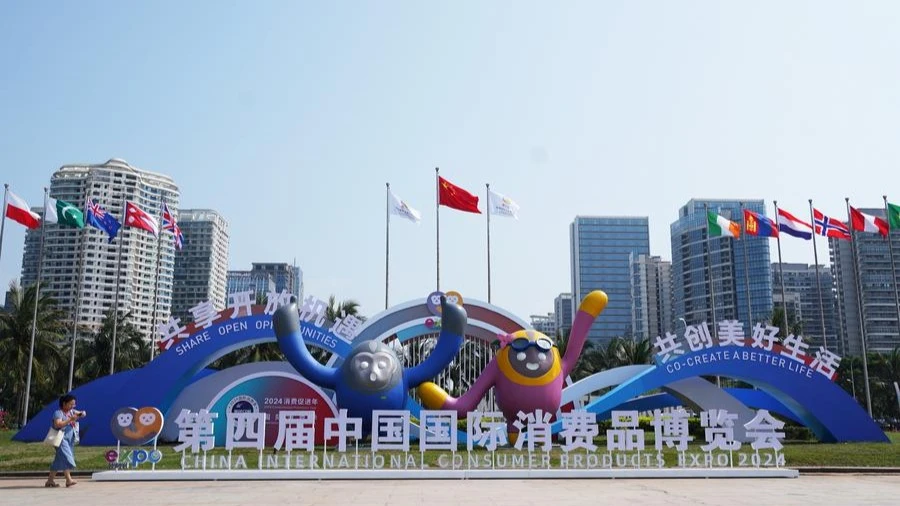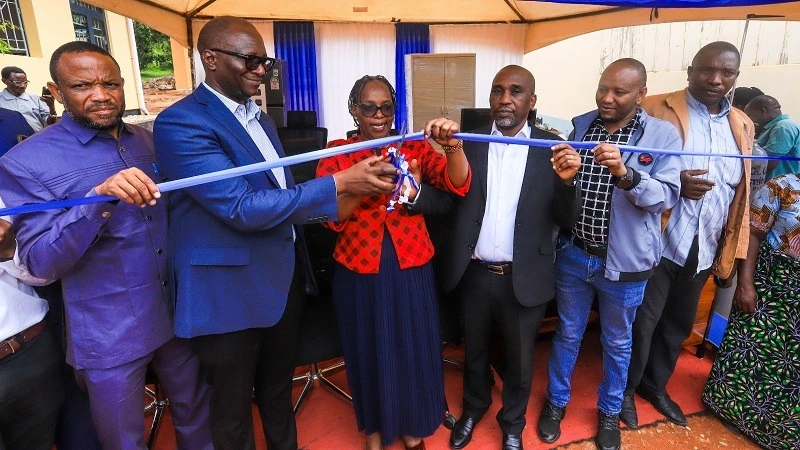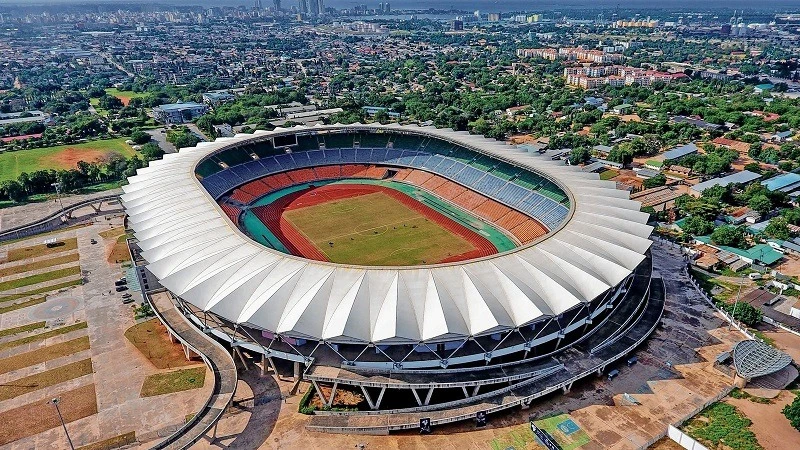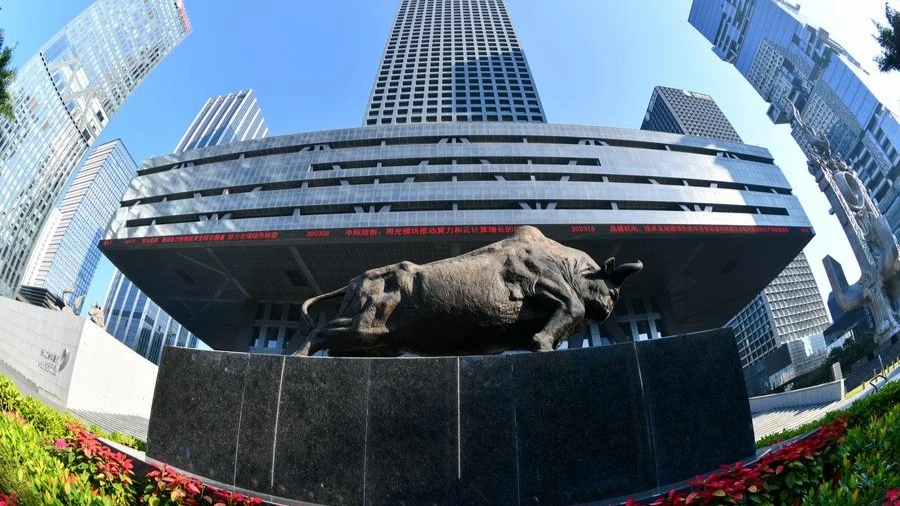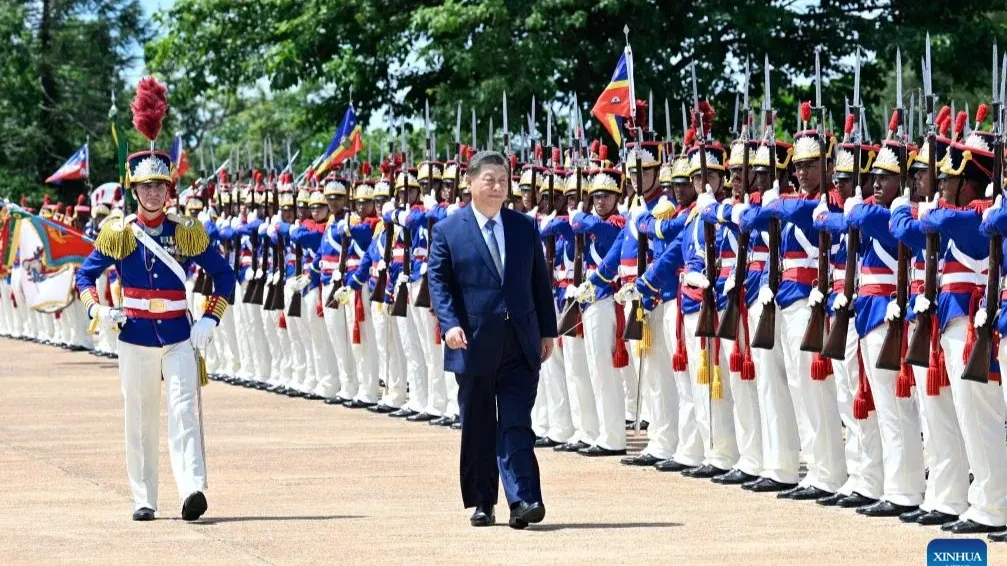CPC to set the tone for new five-year plan crucial for advancing modernization

The fourth plenary session of the 20th Communist Party of China (CPC) Central Committee is poised to shape the direction of the 15th Five-Year Plan that will steer the world's second-largest economy from 2026 to 2030, a defining phase on China's path toward basically achieving socialist modernization by 2035.
The plenary session, which started in Beijing on Monday, will review the CPC Central Committee's draft proposals for formulating the 15th Five-Year Plan for national economic and social development.
As an overarching blueprint to guide national development, five-year plans outline the country's targets, strategies, priorities and policy orientations in various fields. Starting in 1953, consecutive five-year plans have contributed to China's miracles of rapid economic growth and long-term social stability, becoming an important governance approach.
Over the past five years, China's economy has made remarkable progress in high-quality development, driven by innovation and growing domestic demand. This achievement comes despite mounting challenges, including the global COVID-19 pandemic and an increasingly complex external environment.
From 2021 to 2024, China maintained an average annual growth rate of 5.5 percent. The estimated increment of the Chinese economy during the 14th Five-Year Plan period (2021-2025) is set to surpass 35 trillion yuan (4.93 trillion U.S. dollars), which is more than the annual GDP of a major Western economy. China's per capita GDP hit 13,445 U.S. dollars last year, placing the country among the top tier of upper-middle-income countries.
Having eradicated absolute poverty and built a moderately prosperous society in all respects, China aims to basically realize socialist modernization by 2035 and build itself into a great modern socialist country in all respects by the middle of this century. As the 14th Five-Year Plan period is concluding on a high note, the 15th Five-Year Plan period marks a crucial phase for the country to consolidate its foundation and make all-out efforts to accomplish its 2035 target and beyond.
Over the next five years, China will place greater strategic emphasis on fostering new quality productive forces to drive economic growth. This goal will be supported by comprehensive top-level planning along with stronger institutional and policy measures. The country aims to intensify scientific and technological innovation and achieve breakthroughs in core technologies in critical areas. At the same time, parallel efforts will focus on upgrading traditional industries, nurturing emerging sectors, and laying the groundwork for future industries.
Fueled by massive investment, a strong talent pool and supportive policies, China continues to make steady strides in innovation. In recent years, the country has developed high-performance chips, advanced operating systems, and large artificial intelligence (AI) models. It has also achieved remarkable progress in areas such as quantum technology, manned spaceflight, and deep space exploration.
The country's "AI Plus" initiative is empowering scientific research and industries, and creating new consumption scenarios. High-tech industries and a deeper integration of sci-tech and industrial innovation will play a bigger role in fostering new growth drivers for the Chinese economy in the years to come.
As China accelerates the forging of a new development paradigm, domestic demand will be further expanded to become the main engine and anchor of economic growth. This year, the central government has prioritized vigorously boosting consumption, increasing investment returns, and stimulating domestic demand across the board.
Consumption potentials in sectors such as the ice and snow economy, the silver economy, and the low-altitude economy as well as in rural areas are to be unlocked. The country is expected to lay out effective measures to promote coordinated regional development, advance comprehensive rural revitalization and integrated urban-rural development, and accelerate the modernization of agriculture and rural areas over the next five years.
At the same time, as a global leader in green technology, China will press ahead with its domestic green transition while contributing to global climate action through its cost-effective products and tech expertise.
From 2026 to 2030, China will continue to advance comprehensive reforms and pursue high-standard opening up. More than 300 reform measures rolled out at the third plenum of the CPC Central Committee last year are set to be completed during the 15th Five-Year Plan period.
Five-year plans are a distinctive strength of socialism with Chinese characteristics, representing a key element of China's governance success. Unlike policy fluctuations often seen in some Western countries, consistent plans reflect the CPC's and the Chinese people's unwavering focus on long-term goals, their commitment to practical, results-oriented action, and their determination to keep advancing until those goals are achieved.
With the 15th Five-Year Plan set for implementation next year, Chinese modernization under the strong leadership of the CPC is poised to break new ground on all fronts. Through the united efforts of the entire nation and deeper international cooperation, China is expected to move steadily closer to its established goals, even as it navigates the challenges that lie ahead.
Top Headlines
© 2025 IPPMEDIA.COM. ALL RIGHTS RESERVED





